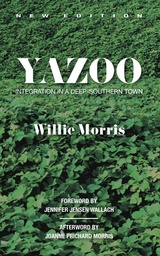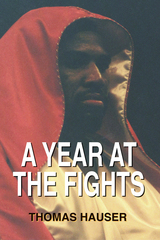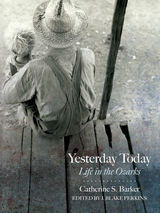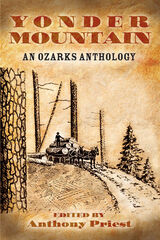7 start with Y start with Y

Finalist, 2018 Miller Williams Poetry Prize
Ya Te Veo takes as its title the name of a mythical tree that eats people. Like the branches of that tree, the poems in this book seem to capture and nourish themselves on a diverse cast of would-be passers-by, drawing their life-force from the resulting synthesis of characters. Among the seized are poets and painters alongside musicians from Garth Brooks to Wu-Tang Clan to the composer Morton Feldman, whose mysterious personality serves as a backdrop in many poems for meditations on intimacy, ethics, and anxiety.
As the phrase “ya te veo” (“I see you”) implies, this is a book interested in revealing what we think is hidden, in questioning the gap inside all of us, a gap between what we feel and what we say and do, making space for our many contradictions.
Like the works of Feldman, these poems focus and recede, experimenting with form in order to accomplish a state of deep concentration. They impersonate sonnets, ghazals, terza rima, monologues, translations, and freestyles, but inexactly, embracing failed imitation as an opportunity to remix the familiar.


Acclaimed boxing writer Thomas Hauser admires the sweet science, but he also recognizes and confronts its problems. His essays here portray the sport in all its glory and gore, its grace and disgrace.
Hauser tracks the effects of big money on the sport, exposes corruption at the highest levels, and examines the emotional links between the September 11 attack on America and the way we experience the violence of boxing. He follows the biggest fighters and the most important fights through 2001 into the early months of 2002. He also depicts the broadcasters, government regulators, and others-the people behind the scenes who shape boxing without ever taking a punch. We meet fighters such as Lennox Lewis, Mike Tyson, and Bernard Hopkins, and non-combatants like ringside physician Margaret Goodman, trainer Eddie Futch, and the powers that be at HBO.
Praise for Thomas Hauser’s writing about professional boxing:
New York Times: Incomparable and indispensable.
Washington Post: Brilliantly crafted.
New York Daily News:The best writing so far on the business of boxing.
Boxing Collectors’ News: A. J. Liebling’s current-day successor.
Ring Magazine: No one has ever done it better.


Catherine S. Barker's 1941 book Yesterday Today: Life in the Ozarks sought to illuminate another side of these “remnants of eighteenth-century life and culture”: poverty and despair. Drawing on her encounters and experiences as a federal social worker in the backwoods of the Ozarks in the 1930s, Barker described the mountaineers as “lovable and pathetic and needy and self-satisfied and valiant,” declaring that the virtuous and independent people of the hills deserved a better way and a more abundant life. Barker was also convinced that there were just as many contemptible facets of life in the Ozarks that needed to be replaced as there were virtues that needed to be preserved.
This reprinting of Yesterday Today—edited and introduced by historian J. Blake Perkins—situates this account among the Great Depression-era chronicles of the Ozarks.


Winnowed from a distinguished career, then distilled, then polished and winnowed again, the poems in You Are Here are Leon Stokesbury’s best from fifty years of published work.
The selections from his earlier volumes are as fully realized as one would expect from the winner of the AWP Poetry Competition and the Poets’ Prize. But it is in Stokesbury’s new work, collected under the heading “These Days,” that he reveals something completely different. From a carnival sideshow to Hitchcock’s Mount Rushmore, from John Keats’s backyard to the miseries of a failed crematorium operator, every turned page divulges a particular we didn’t see coming. You Are Here is like a sideshow of this modern world, even when we discover, amazed, our selves looking back at us.
“Why do we still only stand here?” Stokesbury asks in one of his earliest salvos. The poems in this collection give such varied answers that readers will have no idea what the next page holds, only that they will find themselves somewhere new.
READERS
Browse our collection.
PUBLISHERS
See BiblioVault's publisher services.
STUDENT SERVICES
Files for college accessibility offices.
UChicago Accessibility Resources
home | accessibility | search | about | contact us
BiblioVault ® 2001 - 2024
The University of Chicago Press









